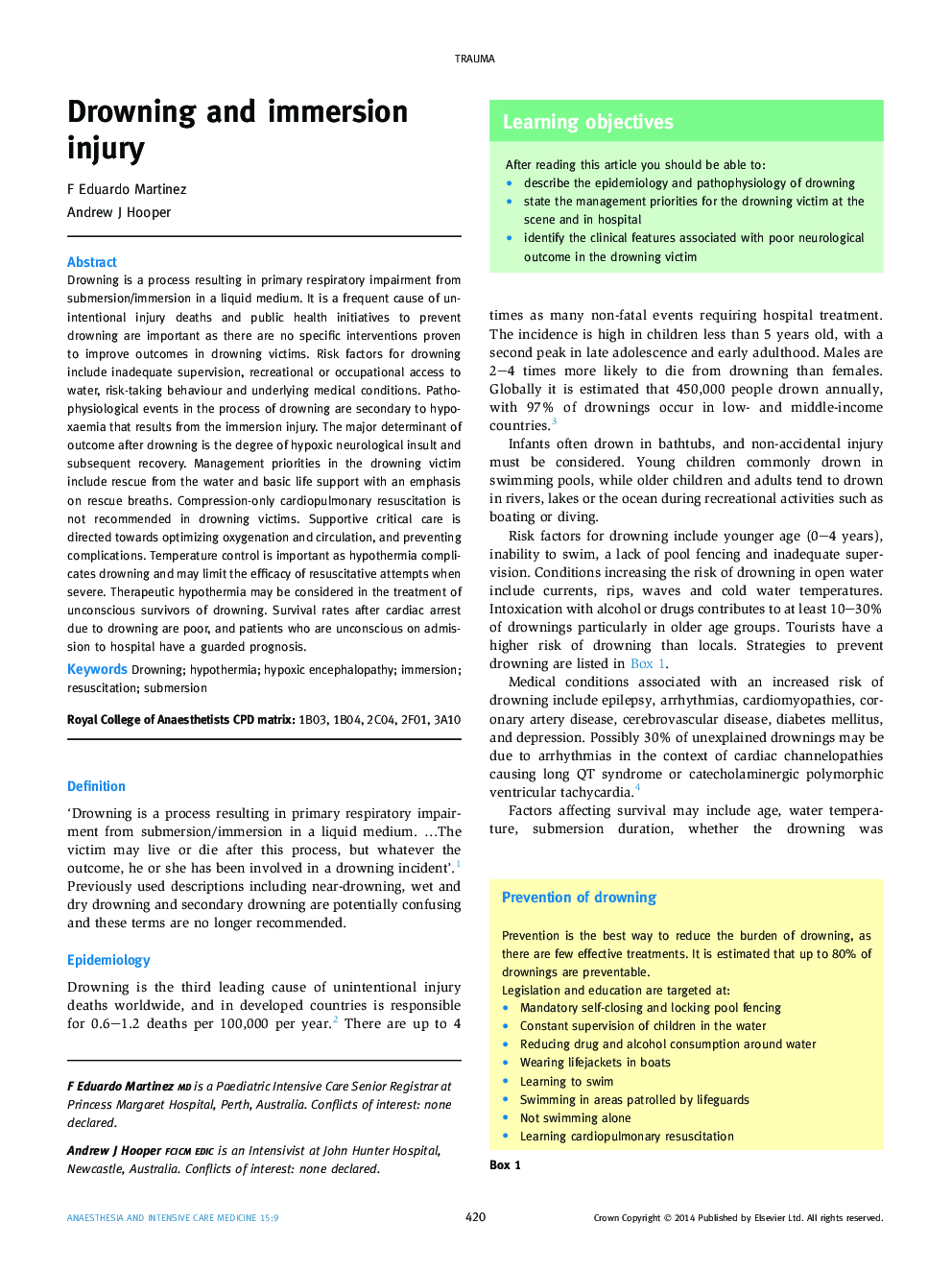| Article ID | Journal | Published Year | Pages | File Type |
|---|---|---|---|---|
| 2742349 | Anaesthesia & Intensive Care Medicine | 2014 | 4 Pages |
Drowning is a process resulting in primary respiratory impairment from submersion/immersion in a liquid medium. It is a frequent cause of unintentional injury deaths and public health initiatives to prevent drowning are important as there are no specific interventions proven to improve outcomes in drowning victims. Risk factors for drowning include inadequate supervision, recreational or occupational access to water, risk-taking behaviour and underlying medical conditions. Pathophysiological events in the process of drowning are secondary to hypoxaemia that results from the immersion injury. The major determinant of outcome after drowning is the degree of hypoxic neurological insult and subsequent recovery. Management priorities in the drowning victim include rescue from the water and basic life support with an emphasis on rescue breaths. Compression-only cardiopulmonary resuscitation is not recommended in drowning victims. Supportive critical care is directed towards optimizing oxygenation and circulation, and preventing complications. Temperature control is important as hypothermia complicates drowning and may limit the efficacy of resuscitative attempts when severe. Therapeutic hypothermia may be considered in the treatment of unconscious survivors of drowning. Survival rates after cardiac arrest due to drowning are poor, and patients who are unconscious on admission to hospital have a guarded prognosis.
